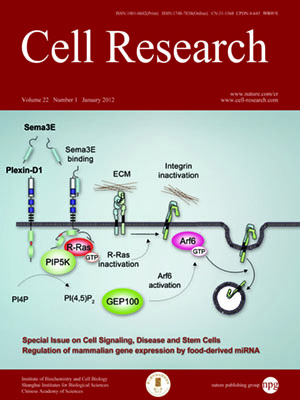
Volume 22, No 1, Jan 2012
ISSN: 1001-0602
EISSN: 1748-7838 2018
impact factor 17.848*
(Clarivate Analytics, 2019)
Volume 22 Issue 1, January 2012: 33-42
REVIEWS
Determinants of public T cell responses
Hanjie Li1, Congting Ye2, Guoli Ji2 and Jiahuai Han1
1State Key Laboratory of Cellular Stress Biology and School of Life Sciences, Xiamen University, Xiamen, Fujian 361005, China
2Department of Automation, Xiamen University, Xiamen, Fujian 361005, China
Correspondence: Jiahuai Han,(jhan@xmu.edu.cn)
Historically, sharing T cell receptors (TCRs) between individuals has been speculated to be impossible, considering the dramatic discrepancy between the potential enormity of the TCR repertoire and the limited number of T cells generated in each individual. However, public T cell response, in which multiple individuals share identical TCRs in responding to a same antigenic epitope, has been extensively observed in a variety of immune responses across many species. Public T cell responses enable individuals within a population to generate similar antigen-specific TCRs against certain ubiquitous pathogens, leading to favorable biological outcomes. However, the relatively concentrated feature of TCR repertoire may limit T cell response in a population to some other pathogens. It could be a great benefit for human health if public T cell responses can be manipulated. Therefore, the mechanistic insight of public TCR generation is important to know. Recently, high-throughput DNA sequencing has revolutionized the study of immune receptor repertoires, which allows a much better understanding of the factors that determine the overlap of TCR repertoire among individuals. Here, we summarize the current knowledge on public T-cell response and discuss future challenges in this field.
Cell Research (2012) 22:33-42. doi:10.1038/cr.2012.1; published online 3 January 2012
FULL TEXT | PDF
Browse 2191


